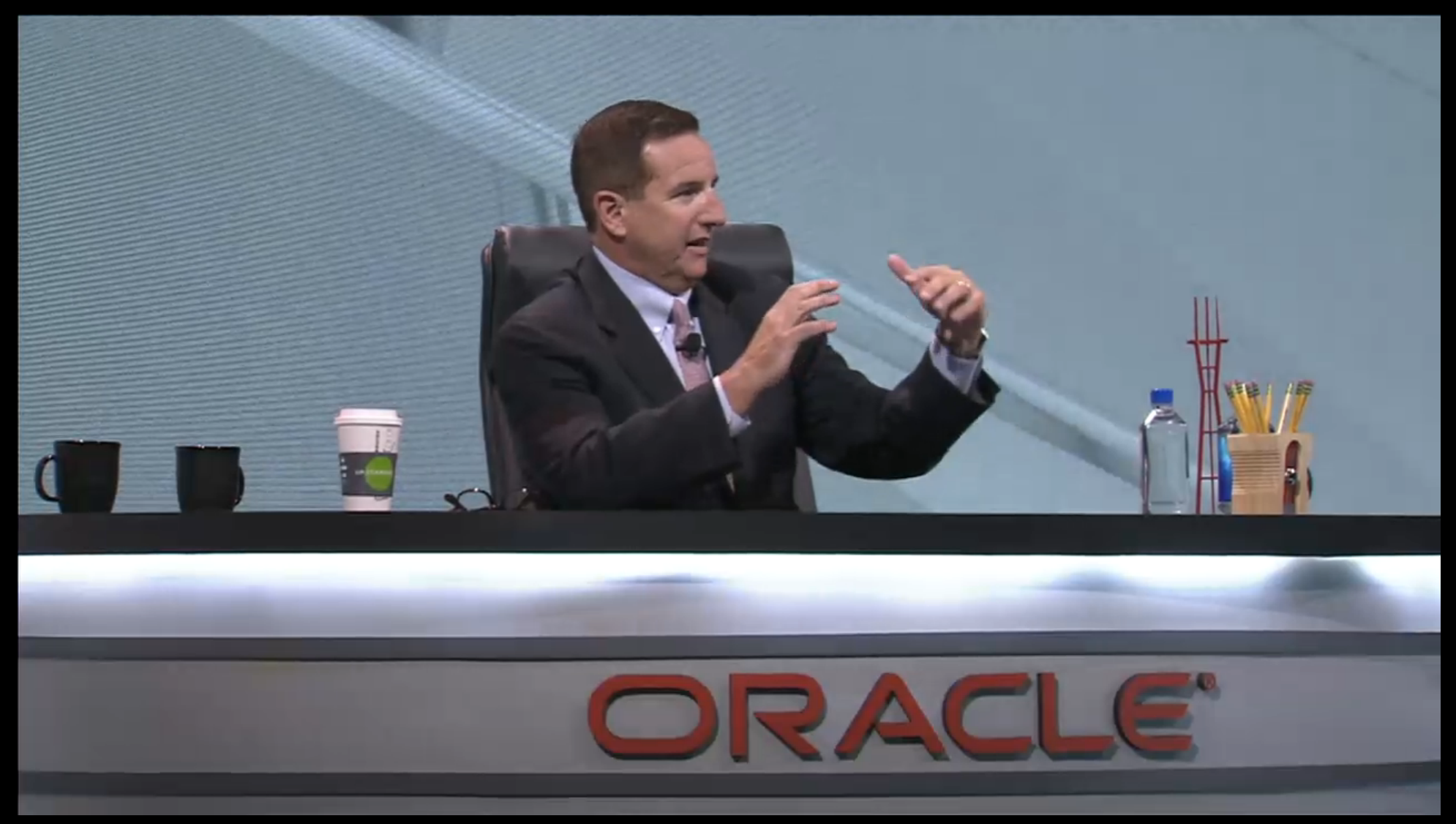 NEWS
NEWS
 NEWS
NEWS
 NEWS
NEWS
Some 80 percent of information technology budgets by 2025 will be spent on cloud computing, not traditional IT products, and the number of corporate-owned data centers will drop by 80 percent by then.
That’s according to Oracle Corp. co-Chief Executive Mark Hurd, who issued a series of sweeping predictions about the impact of cloud computing today at the company’s annual OpenWorld conference in San Francisco. (*Disclosure below.)
In his keynote speech, Hurd added one more prediction that depends on the first two coming true: Chief information officers will spend 80 percent of their budgets on innovation and new services rather than maintenance of existing systems — a complete reversal of current spending patterns at most companies.
Hurd acknowledged that forecasts he made last year brought out skeptics, and so did these. “The direction is correct,” said Jean Bozman, vice president at market researcher Hurwitz & Associates, but she thinks they likely will take longer to happen than Hurd predicts.
Hurd’s comments followed Chairman Larry Ellison’s introduction on Sunday of a raft of new products and services aimed at making Oracle, long a laggard in cloud computing, more of a force versus leaders such as Amazon.com Inc. and Microsoft Corp. The enterprise software company, best known for its iconic database, reported a little under $1 billion in cloud revenues in its latest quarter, while Amazon Web Services (AWS) is close to $3 billion a quarter.
Hurd made the predictions to underscore Oracle’s own aggressive move to cloud computing, which is costing the company big bucks in research and development, sales and marketing. R&D alone has grown to $5.1 billion in the just-ended fiscal 2016, up $2 billion from six years ago, and he said much of it has to do with rewriting software for the cloud and creating new cloud services.
“This makes me popular with customers and not so popular with investors,” he said at a post-keynote press conference. Investors knocked Oracle’s stock down 4.75 percent Friday after the company’s first-fiscal quarter earnings report indicated continued heavy spending on cloud initiatives along with pressure on traditional software license revenues.
Hurd hammered home both Oracle’s progress in the cloud, with cloud revenues up 82 percent in the latest quarter, and the spending required to make a credible run at the likes of AWS and Microsoft Azure. Besides R&D spending, Hurd said Oracle has doubled global sales force in past three years and now employs more than 10,000 cloud engineers. “These are massive commitments to engineering resources to build out this stuff,” he said.
During his keynote speech, Hurd also sought to prove the company is a credible player in cloud computing by trotting out a series of customers at his OpenWorld conference keynote. In something of an infomercial format, Hurd interviewed information technology executives from HSBC Bank plc, the private club operator ClubCorp and Motorola Solutions and played videos of interviews with others such as Lyft, Orange and visual-effects creator Tippett Studios.
“Keeping our technology current was incredibly expensive and just difficult to do,” said Joanna Fielding, HSBC’s chief financial officer. “So our new strategy is to lease, buy, build — in that order.” That’s what led the company to Oracle’s cloud offerings, she said.
It was notable, however, that with the possible exception of HSBC, few of the customers cited were marquee names usually associated with large IT budgets. And even HSBC, noted Bozman, “didn’t hand over their banking system to the Oracle cloud,” instead using cloud ERP services. That’s not surprising given the security and governance requirements of financial services firms, which no cloud service currently can guarantee, and it also may be an indication that the cloud is bringing the era of big-dollar software deals to an end.
But it also illustrates the difficulty Oracle will have in moving big customers predominantly to the cloud. Indeed, implicit in Hurd’s predictions is Oracle’s repeated assertion that companies will need to operate both their software in corporate data centers and tap the cloud in a “hybrid” environment for a long time to come.
“We’re going to be in this hybrid period for an extended period of time,” he said. That could play to Oracle’s entrenched position in enterprise data centers. The company has repeatedly emphasized it uniquely can offer companies a way to move applications and data more easily between on-premise data centers and the cloud. “Nobody else really has close to that capability,” he added.
Teryn O’Brien is a contributor to this piece.
(* Disclosure: Oracle and other companies sponsor some OpenWorld segments on SiliconANGLE Media’s theCUBE. Neither Oracle nor other sponsors have editorial control over content on theCUBE or SiliconANGLE.)
THANK YOU